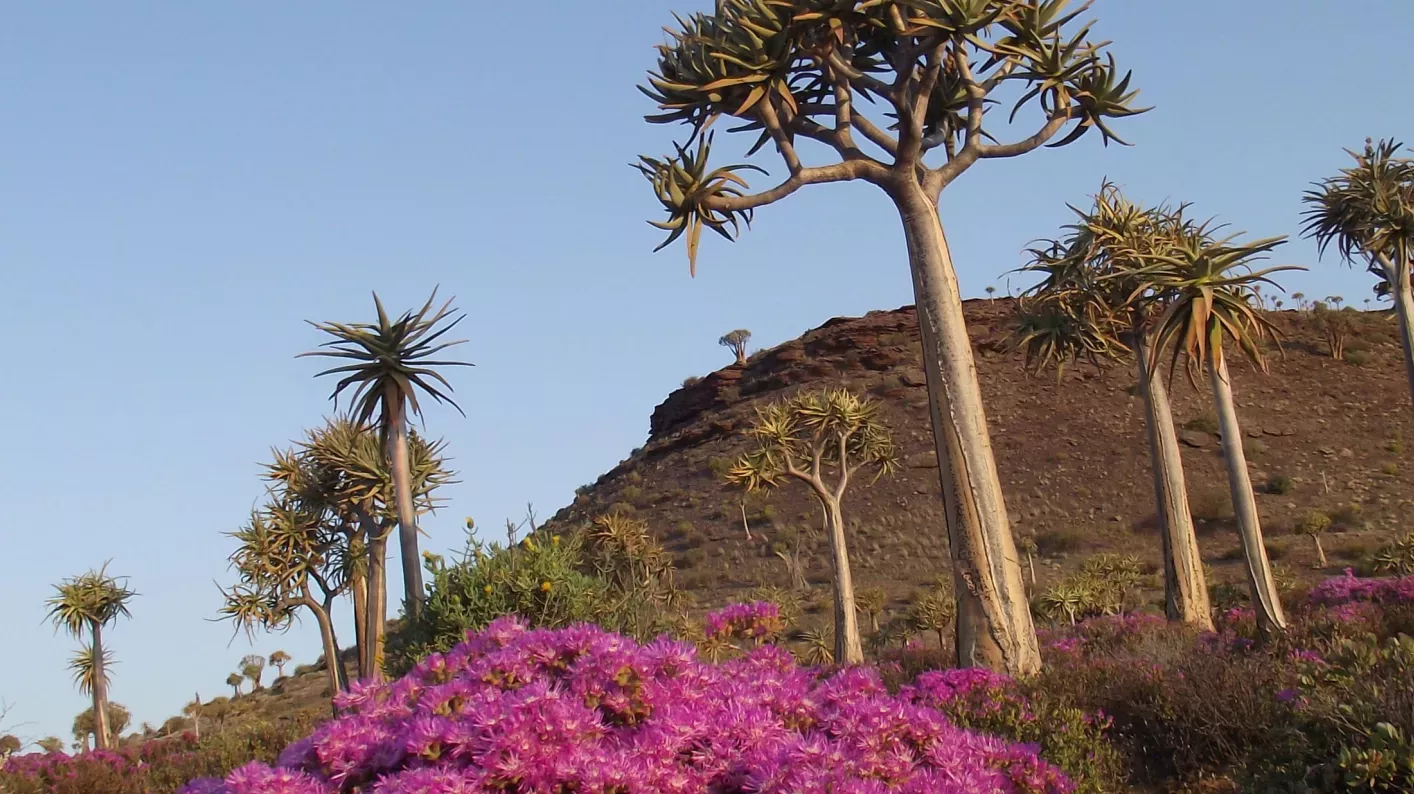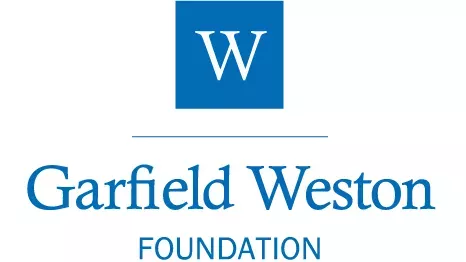Global Tree Seed Bank Programme
Conserving some of the world’s rarest, endangered and useful tree and shrub species as well as conducting vital tree conservation research in order to retain a significant resource for humanity.

Trees are invaluable resources, providing essential materials such as timber, fuel, food and medicines. In the landscape, they perform vital services such as water catchment, erosion and pollution control, and climate regulation. Yet, trees are under increasing threat from deforestation, over exploitation, climate change, pests and diseases. As global threats increase, we need to intensify our conservation activities in order to safeguard important species and essential resources.
Funded over a series of phases, the programme started in 2014, with the establishment of the Global Tree Seed Bank based at the Millennium Seed Bank (MSB), where the seeds of around 11,000 tree and shrub species were already conserved. From 2015 the MSB worked with partner organisations in 35 countries across the world with the aim to conserve over 3,000 of the rarest, most threatened and useful trees. In addition, research carried out at Kew and by our partners started to fill vital gaps in our knowledge of science underpinning effective tree conservation.
Following the success of the Global Tree Seed Bank Programme from 2015-2019, funding for a new phase was awarded by the Garfield Weston Foundation, to begin in January 2020 for three years. In this new phase, five of the projects represent established partnerships from the programme, allowing us to build on activities and achievements in Mexico; Madagascar; Bhutan; Thailand; and Indonesia. In addition, three new projects have been developed in Mozambique, South Africa, and Pakistan with existing Kew partners in countries with large numbers of threatened tree species, not yet banked.
Complementing the new seed collecting activity, are research projects and species conservation assessments to be carried out by in-country projects and at Kew. Based at the MSB and within the Comparative Seed Biology team, a new research project will soon begin ‘IMproving the PREservation of difficult-to-store Tree Seeds’ – IMPRETS. This research will improve our understanding of tree seed form and function and the application of low temperature science to the preservation of tree seeds.
The new programme also has a substantial training and capacity building element to strengthen partner organisations’ long-term capacity to carry out seed conservation work. This includes continuation of the MSBs Seed Conservation Techniques course and providing online training resources to a wider conservation community.
Countries and Territories Contributing to the Global Tree Seed Bank Programme

So far the Programme has received seeds from: North America (Canada, Mexico and USA); South America (Colombia); the Caribbean (The Bahamas, British Virgin Islands, Dominican Republic, Montserrat, Puerto Rico, St Lucia and the Turks and Caicos Islands); Africa (Cameroon, Guinea, Nigeria, Sierra Leone and Madagascar); Europe (Austria, Belgium, Cyprus, Finland, Italy, Poland, and Spain) and the Caucasus (Azerbaijan, Armenia and Georgia); Asia (Bhutan, Indonesia, Japan, Taiwan, and Thailand); Australia and the Pacific (Hawaii, Fiji, New Zealand and Papua New Guinea). With so many regions involved, there are over 50 participating partners.
Objectives
The main objectives of the programme are to:
1. Collect, bank and conserve up to 5000 of the world’s rarest, most endangered and most useful tree and shrub species
Improve knowledge of the seed biology, germination, and propagation of key species
2. Address key knowledge gaps in tree conservation with research in major areas of tree conservation:
- Development of generic protocols for banking recalcitrant (desiccation sensitive) seeds;
- Analysing the functional seed traits of palms, in order to improve collection strategy and storage protocols;
- Improve our knowledge of palm species relationships and evolution, with particular focus on the Indo-Pacific tribe Areceae;
- Compiling DNA sequence data for all genera of South East Asian trees to explore links between conservation and evolution;
In the new phase of the programme:
- Improve our understanding of tree seed form and function and the application of low temperature science to the preservation of tree seeds.
3. Invest in training, essential infrastructure, equipment and data sharing to increase our partner organisations’ long-term capacity to carry out seed conservation work.
Lead Department
This is a large programme including all Science Departments at Kew and involving many individuals.
Project Leader
Project Manager
Team
Ando Andriamanohera
Amy Barker
Merveille Bernard
Stuart Cable
Naomi Carvey
Marcella Corcoran
Aisyah Faruk
Maraeva Gianella
Kate Hardwick
Kirstine Manger
Hanna Oldfield
Jo Osborne
Tim Pearce
Jack Plummer
Eric Rakotoniaina
Nomentsoa Randriamamonjy
Vonona Randrianasolo
Velosoa Razafiniary
Henintsoa Razanajatovo
Tiziana Ulian
Anne Visscher
Michael Way
Ian Willey
Phase 3 partners
Thailand
Chiang Mai University’s Forest Restoration Research Unit
Indonesia
Bhutan
Madagascar
Silo National des Graines Forestières
Mexico
Facultad de Estudios Superiores Iztacala, Universidad Nacional Autónoma de México
South Africa
South African National Biodiversity Institute
Mozambique
Mozambique Institute of Agricultural Research
Pakistan
The Pakistan Agricultural Research Council
Phase 1 and 2
More information on Phase 1 and 2 partners can be found on the individual project webpages.
For phases 1 & 2, by December 2019 the GTSBP had achieved:
- Seeds from 3,863 tree and shrub species from 35 countries had been conserved
- In the Comparative Plant and Fungal Biology Department at Kew, four research fellowship projects had been completed and research published, or in process of submission.
- More than 340 people had been trained in Seed Conservation Techniques either in country or at the MSB.
- 15 Blue Drum kits (mini seed banks) had been sent to partners in Africa, Asia, the Caribbean and the Pacific
- A new seed bank had been established in the National Botanical Garden of Santo Domingo, Dominican Republic (Feb 2017). Two small national seed banks were also set up in 2017 at the IRAD-National Herbarium of Cameroon and at UGAN-C-National Herbarium of Guinea. In Azerbaijan, a permanent and purpose-built Seed Bank Department was established, based at the Institute of Botany.
- Research projects were completed by partners in Colombia, the Dominican Republic, Georgia, Italy, Japan, Mexico and New Zealand.
- A critical checklist of the woody flora of Tuscany had been published
For Phase 3 of the Global Tree Seed Bank Programme our major planned outcomes are as follows:
- Collect, bank and research up to 2,000 (more) of the world’s rarest, most endangered and most useful tree species, saving them from extinction.
- In-country capacity building: invest in essential infrastructure, equipment and data sharing to improve our partner organisations’ long-term capacity to carry out seed conservation work.
- Seed Conservation Techniques courses: over three years, these three-week courses will train 45 scientists on targeting, collecting, processing, testing and using seeds according to the MSB Partnership published standards. These will be delivered both at Kew and in partner countries.
- Online resources: Training videos will be made available online as well as Seed Conservation Technical Information Sheets and web materials. This will enable knowledge and skills to be shared with a wider scientific community.
Each individual project within the GTSBP has their own project objectives, about which more can be found on the individual project webpages.

Global Tree Seed Bank of the Caucasus

Applying phylogenomics to tree seed science to enhance tree conservation strategies

Cryopreservation of temperate recalcitrant seed

Developing the national seed collection of South Africa

Evolution and diversification of the palms and their seed traits

Global Tree Seed Bank Programme: Indonesia

Medicinal and aromatic plants of Pakistan

Saving threatened forests of Hispaniola in the Dominican Republic

Science-based conservation of tree species in Mexico

The National Seed Conservation Programme: Mozambique
Pence, V. C., Meyer, A., Linsky, J., et al. (2022)
Defining exceptional species—A conceptual framework to expand and advance ex situ conservation of plant diversity beyond conventional seed banking.
Biological Conservation 266: 109440.
Van der Burgt, X. M., Pepe M., Haba, Magassouba S. & Veranso-Libalah, M. C. (2021)
Benna alternifolia (Melastomataceae: Sonerileae), a new herbaceous genus and species from Guinea, West Africa.
Willdenowia 52: 25 – 37.
Ballesteros, D. & Pritchard, H.W. (2020)
The Cryobiotechnology of Oaks: An Integration of Approaches for the Long-Term Ex Situ Conservation of Quercus Species.
Forests 11: 1281.
Tellez, O., Mattana, E., Diazgrandos, M., et al. (2020)
Native trees of Mexico: diversity, distribution, uses and conservation.
PeerJ 8: e9898
Bellot, S., Bayton, R.P., Couvreur, T.L.P., et al. (2020)
On the origin of giant seeds: the macroevolution of the double coconut (Lodoicea maldivica) and its relatives (Borasseae, Arecaceae).
New Phytologist
Ballesteros, D., Nebot, A., & Pritchard, H. W. (2019)
Cryobiotechnology for the long-term preservation of oak (Quercus sp.) genetic resources.
Acta Horticulturae, 1234: 37-46.
Butel, P., Fanega-Sleziak, N., Nebot, A., Pritchard, H. W., & Ballesteros, D. (2019).
Cryobiotechnological approaches for the preservation of Aesculus sp.
Cryobiology, 91: 194.
Johnson, M.G., Pokorny, L., Dodsworth, S., et al. (2019)
A universal probe set for targeted sequencing of 353 nuclear genes from any flowering plant designed using k-medoids clustering.
Systematic Biology 68: 594-606.
Mattana, E., Peguero, B., Di Sacco, A., et al. (2019)
Assessing seed desiccation responses of native trees in the Caribbean.
New Forests, 1-17.
Mattana, E., Garcia, R., Encarnacion, W., Clase, T., Manger, K.R., Peguero, B., Way, M.J., Jimenez, F., Ulian, T. (2017).
A new seed bank for Hispaniola: a platform to support the conservation and sustainable use of the Caribbean native flora.
Oryx, 51 (3): 394-395.
Pritchard, H.W., Nadarajan, J., Ballesteros, D., et al. (2017)
Cryobiotechnology of tropical seeds – scale, scope and hope.
Acta Horticulturae 1167: 37-47.
Roma-Marzio, F., Bedini, G., Müller, J.V. & Peruzzi, L. (2016)
A critical checklist of the woody flora of Tuscany (Italy).
Phyotaxa 287: 1–135.

Double coconut: The largest seed in the world

A blossoming partnership in Japan

Conservation of trees in Mesoamerica and the Caribbean

Sacred trees under threat

